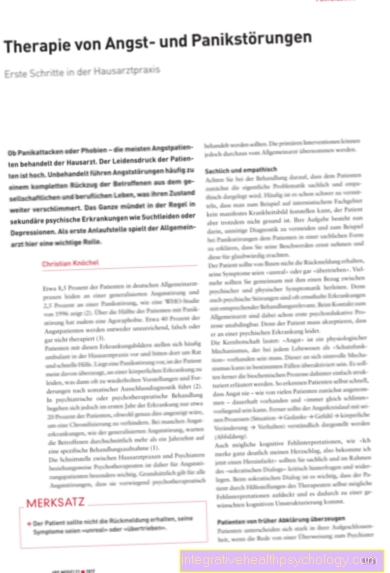condition
Synonyms
Conditional skills
German: condition
introduction
The term condition is often incorrectly used as a synonym for endurance in everyday use. However, this is only part of the fitness level.
From the Latin translation, the condition is understood as "condition". Transferred to sport as the ability to perform in sports. In addition to the stamina already mentioned, strength, speed and flexibility are part of the conditional skills. Every athlete must therefore adapt the degree of individual physical characteristics to his or her athletic requirements. A marathon runner will certainly have a lower strength potential than a shot putter or strength athlete and vice versa. Thus, the statement that the marathon runner is in better condition than the strength athlete is simply wrong. In addition, there is an overlap in the respective conditional skills. This can e.g. be the speed force etc. You can find detailed information in the paragraph below.
Individual sports have different physical requirements, so athletes and coaches have to weigh up which physical ability has to be trained in training.
Below you will find a list of the various requirements in game sports.
- to overview weight training
- to the musculature overview
What is stamina
Condition does not only include endurance, as many people claim, but is an umbrella term and is made up of several factors: strength, endurance, speed and flexibility. Besides, condition is also a sub-term for the generic term physical performance. The distribution of the individual skills is very individual and each person has different strengths and different levels of conditional skills.
Condition is a factor in athletic performance and is determined by the composition of the above-mentioned motor characteristics. A good condition is equated with a consistently high level of development of the motor characteristics strength, speed, endurance and mobility.
Depending on the sport, the level of training in the physical characteristics is different. Because every sport has a different requirement profile for which the athletes have to adjust and prepare.
The conditioning skills can also be broken down into further sub-groups, which means that you can structure your training plan even more finely. Strength is divided into maximum strength, rapid strength, strength endurance and reactive strength. The speed skills are quick reactions, speed of acceleration and speed of movement. Short-term endurance, medium-term endurance and long-term endurance are among the endurance skills. The mobility can be divided into the joint mobility and the ability to stretch. After this division you can adapt and design your training plan specifically to the requirement profile of your own sport.
Build condition
In general, stamina is built up by doing or having done a certain sport regularly and over a certain period of time. Long-distance sports such as running, swimming, cross-country skiing, walking or inline skating are ideal for building stamina.
Often the mistake is made in conditioning training of only looking at endurance sport and only undergoing training in this area. However, fitness training also includes speed, strength and flexibility. A good training to build condition should contain all elements and be varied. The following example can serve as a training plan template.
WEEK 1: Easy run (approx. 25 minutes; 2.5-3 km; heart rate 125), then take a day off and do two strength training sessions for core and legs (three series of 20 repetitions) on leg press, lat pulldown and chest press (approx . 45 minutes).
WEEK 2: Intensive interval training with four intervals, 1.5 minutes each with pulse 165 and three minutes with pulse 125 (approx. 20 minutes). After a day off for unit two, classic strength training (approx. 60). Another day off with a long run (approx. 50 minutes) with a heart rate of 140 and a distance of 6.5 km.
WEEK 3: Speed run at pulse 170 and 7 km distance (approx. 45 minutes) followed by a day off. Second unit with strength training of about one hour. After another day off, an easy run with approx. 125 heart rate and 3.5 km distance (approx. 30 minutes).
Read more here: How can you build up stamina?
Improve fitness
Since the condition is a construct of four different skills, increasing the condition is somewhat more extensive than pure endurance training. All four aspects of the condition must be improved accordingly in order to increase it overall. In any case, fitness training should contain one thing: variety.A mix of fitness or strength training, jogging, swimming, inline skating and piloxing or Bikram yoga is recommended to improve the condition. It is important that the training should be varied so that the body always receives a new stimulus and "can never rest". The conditioning training should also be variable in intensity. Different load intensities train the body especially in the ability to recover and ensure a healthy and fit cardiovascular system. Rest breaks are just as important as a balanced and healthy diet. Without sufficient energy and rest, the body will not be able to increase its performance level, or only slightly. After a period of getting used to it, the training can be intensified with additional weights in order to expose the body to a new, stronger stimulus.
Find out more about the topic here: How can endurance improve? and Endurance sports and nutrition
Create a training plan
This example clearly shows how varied a training plan for conditioning training can look. Then there are training units with coordination exercises and flexibility training, as well as sprints and circuit training. If the exemplary three-week plan is expanded with this, you can develop a solid foundation for your fitness within two months. The type of training and the training plan also depends on the time frame. If you have more time, you can also train more or invest more time in your training plan and thus create more variety. A varied training plan, taking into account the various basic physical properties of strength, speed, flexibility and aerobic endurance performance, is important for building good physical condition. In addition to these factors, diet and the issue of sleep and recovery also play an important role.
endurance
Endurance is the ability to withstand a load as long as possible and to delay the fatigue-related deterioration in performance, which always takes place, for as long as possible. Furthermore, the ability to regenerate quickly is part of endurance.
The aerobic endurance is used for general health training, fitness training, for fat burning, compensatory for strength training, in game sports.
Even high-performance sprinters train in the basic endurance area at the beginning of their training phase in order to be able to better regenerate the high loads in specific running training. A good endurance ability also enables more intensive training in the weight room.
More detailed information on this topic:
- endurance
- Endurance training
- Endurance sports and fat burning
- Endurance performance diagnostics
- marathon
- Triathlon
force
Strength is the ability, through the interaction of muscles and nervous system, to overcome, hold, or give in to external resistance. Strength is preferably exercised through dumbbell training in the gym. However, strength training does not necessarily mean building muscle. Muscle building training is just a form of strength training. The maximum strength is the basis for all other strength skills.
More detailed information on this topic:
- Strength training
- Maximum strength training
- Functional strength training
- Weight training and fat burning
- Weight training and nutrition
- Strength training in childhood
- Strength training in old age
- Weight training for women
- Bodybuilding
- Muscle building
- fitness
speed
Speed is the conditional ability to react as quickly as possible to a stimulus from the environment and to convert it into physical movement. In sport, a distinction is made between elementary and complex forms of speed. In most game sports, good speed is a prerequisite for athletic performance.
More detailed information on this topic:
- speed
agility
In terms of conditioning skills, mobility often falls in the shadow of endurance, strength and speed. The latest scientific research has shown that the effects of a stretching program, before and after exercise, did not achieve the expected or expected results.
More detailed information on this topic:
- Stretching
- stretching
What is conditioning training?
Condition training is a form of training that aims to train and improve general physical performance. In contrast to other forms of training, the fitness training deals with several different contents, and these contents are essential for a successful training of the condition. The stamina is made up of strength, speed, endurance and flexibility. Therefore, fitness training should address and improve all of these skills. Variety is therefore of enormous importance in fitness training. A wide variety of sports should therefore be used in the fitness training program. Combinations of fitness or strength training with team sports (soccer, handball, volleyball, hockey, etc ...) or endurance sports (jogging, swimming, cycling, etc ...) are therefore very popular. CORE training or training programs for the core are also popular for conditioning training. In order not to neglect mobility, a stretching program and exercises for the fascia should not be missing. Condition training ensures a fit body and high general performance. Many vital values are optimized by the fitness training and thus cardiovascular diseases can also be prevented.
Alternatively, you might also be interested in this topic: Endurance sports
Typical fitness exercises
Typical exercises for fitness training are, for example, burpees, mountain climbers and mountain runs. These exercises strengthen, are persistent, promote mobility and also train speed of movement.
Burpees are also suitable as a warm-up exercise. The starting position is the hip-width stance. From this position you start with a stretch jump with your arms pointing upwards. Then you jump into the plank position. Now pull your legs suddenly towards your hands and jump up again for another stretch. To get started, 20 seconds are suitable and it is about the highest possible number of repetitions.
With a mountain climber you start in the plank position. Now alternately pull your left and right knee towards your chest. These movements are carried out as quickly as possible. The entire upper body remains stable. Here, too, we recommend 20 seconds to get started.
The mountain run is divided into two phases. As an aid you need two large weight plates, a sturdy box or a gymnastics box. For one minute you walk on the flat and thus on the spot. Now it goes uphill for 30 seconds and you start to climb the box alternately with your left and right leg and thus walk up the mountain. When the 30 seconds have passed, there is a minute on the flat before we go up the mountain again. This sequence is repeated ten times.
The first two exercises can be done in isolation, one after the other, or alternate. You could start with 20 seconds of burpees, pause for ten seconds and then follow up with mountain climbers for 20 seconds. You should do this sequence three to four times, giving your all and never losing body tension.
Find out more about the topic here: Speed in sport
How do I measure my condition?
In order to be able to really measure whether the whole training was worth it, you need a test for the condition. A simple test can be done at home on your own stairs. You also need a stopwatch. Now you start walking up and down the stairs for three minutes. The arms should swing loosely next to the body. After the three minutes, the heart rate is measured for one minute with the help of the stopwatch. Now the condition shows. The lower the pulse, the faster the body has recovered and the better the condition. The higher the pulse, the worse the condition. The following can serve as a rough guideline: If the pulse is higher than 130 beats, the condition is in poor condition. The physical condition is satisfactory between 130 and 115 strokes. If the result is between 100 and 115 strokes, then you are in good physical condition. And all values below 100 heart rate are very good.
Lactate level test
The lactate level test is a stress test to examine the fitness level of an athlete in relation to their endurance. This step test is preferably carried out on a bicycle or rowing ergometer, with the resistance increasing every two minutes. The subject must always run / pedal at a constant frequency. This test is carried out up to total load, i.e. until the test leader breaks off or until the test person can no longer pedal the frequency. After each stage, blood is drawn from the test person's earlobe or fingertip. The evaluation of the blood samples shows the lactate value, which in turn provides information about the areas in which the endurance of the athlete may be weak. In addition, the optimal training area of the athlete can be determined from the evaluation in order to set up the most effective training program possible.
You might also be interested in these topics:
- Endurance diagnostics
- Lactate diagnostics
- Lactate threshold
- Lactate test
Mixed forms of fitness:
Strength endurance as an ability in weight training to be able to complete a movement with a scope greater than 25 repetitions. Training sets with 100 repetitions and more are not uncommon. However, the focus is on power.
Endurance Power defined as the ability to maintain a sustained performance with increased stress on the muscles for a longer period of time. However, the focus is on endurance (cyclists)
Speed power as the ability to develop a force impulse after a signal as quickly and effectively as possible (100m sprint). (Explosive power and starting power)
Strength endurance means to be able to increase the strength as long as possible. This can be seen in good sprinters. While inexperienced athletes accelerate up to approx. 30 meters after the start, professional sprinters achieve acceleration values up to approx. 60-70 meters after the start.
Speed endurance means to maintain the resulting force as long as possible.
Professional sprinters can maintain the maximum speed over about 20 meters.
Condition and doping - what is the connection?
Wherever competitive sport is practiced, the subject of doping is not far away. In the meantime, there are unfortunately doping agents for almost every sport in order to optimize performance in competition for your own benefit. Links to doping can also be drawn on the subject of fitness. Since the stamina is made up of four abilities (strength, speed, endurance and flexibility), there are also more points of attack for doping agents. Above all, endurance can be an issue for targeted doping. Doping substances that could be considered here are, for example: EPO, blood doping and anabolic steroids. Stimulant doping agents such as cocaine or amphetamines are also used to increase fitness. In the meantime, new doping agents are constantly being developed and gene doping is also becoming more and more interesting. Many connections and relationships can be shown between the subject of doping and fitness. The decisive factor for whether or not doping is used is the athlete's performance. Amateurs tend not to dope, competitive athletes tend to dope often.
Find out more about: Doping in sport
Fitness level in game sports
tennis
The tennis game is variable in terms of playing time. Loads of more than 1:30 can be achieved. The athlete must therefore have the ability to complete endurance performances in the long term. However, since the course of the game is characterized by short, fast starts, endurance training should mainly focus on speed strength.
In terms of strength development, core muscles should be trained.
For more information, see tennis
Handball
Handball is not only a particularly tough sport, it also requires a special level of fitness. Due to the rapid change between attack and defense, speed is a performance-determining characteristic of this sport. Due to the rapid change between exercise and recovery, a rapid switch between aerobic and anaerobic energy supply must take place. Strength training is relevant to the extent that the throwing speed is maximized. However, this is not about targeted muscle building, but about sport-specific training.
Further detailed information on this topic is available at
- Handball
- Punch handball
Soccer
Footballers must have the ability to complete stamina performances of 90 minutes and possibly more. However, since this is not a pure endurance performance, but a constant change in speeds, the training of the condition should focus on changing the loads. There are driving games here.
In the area of strength development, the hip and thigh muscles are trained.





.jpg)
























